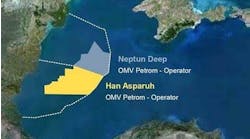Evidence suggests lower returns from farm-in exploration wells, report finds
Offshore staff
LONDON — Westwood Global Energy Group has analyzed results from 419 high-impact exploration wells drilled outside the US and Canada, which were completed between 2017 and the end of October 2022.
It found that 26% of these wells were linked to a farm-out deal with some of the costs covered by the farm-in companies.
Westwood’s analysis suggests that companies typically know which are their best prospects and reduce their exposure to exploration failure by selling down equity in lower-ranked prospects prior to drilling.
At the same time, companies that opt to farm-in leave themselves open to lower success rates and smaller discoveries.
Only one in every three high-impact exploration wells drilled between 2017 and October 2022 brought a potentially commercial discovery. According to Westwood senior analyst Christine Shearman, the cost of failure can be high, hence the frequency with which exploration companies invite others to share the cost and risk, through equity farm-outs in their planned wells.
Westwood estimates the average pre-drill chance of commercial success for wells farmed-out in the period analyzed was 19% compared to 28% for wells that were not farmed-out.
The actual commercial success rate of high-impact wells that had undergone farm-outs and which were completed was 17%, compared to a commercial success rate of 37% for those wells that had not been farmed-out.
Over the period reviewed, 19 commercial discoveries resulted from the 111 farmed-out wells, discovering an estimated total of 10 Bboe of oil and gas. That compares to an estimated 60 Bboe discovered from non-farmed-out high-impact wells.
While there were a few giant discoveries from farmed-out wells, notably Venus offshore Namibia (3 Bboe), Yakaar offshore Senegal (2.5 Bboe) and Ken Bau offshore Vietnam (1.25 Bboe), the average size of finds resulting from farmed-out wells was 127 MMboe compared to 246 MMboe from those that had not been farmed out.
Statistics show that companies choosing to farm-in should be mindful of the concept of “caveat emptor” or “let the buyer beware,” Shearman concluded.
03.08.2023



